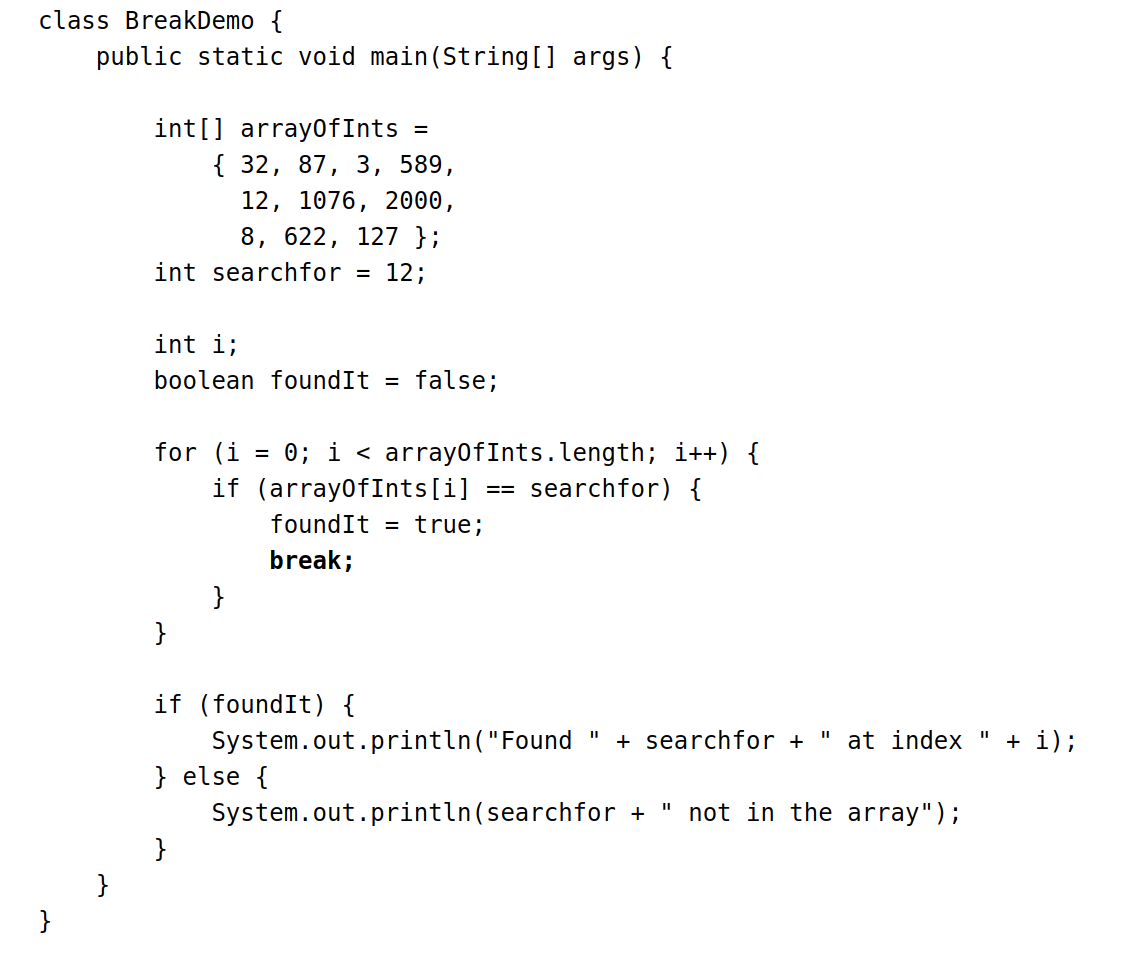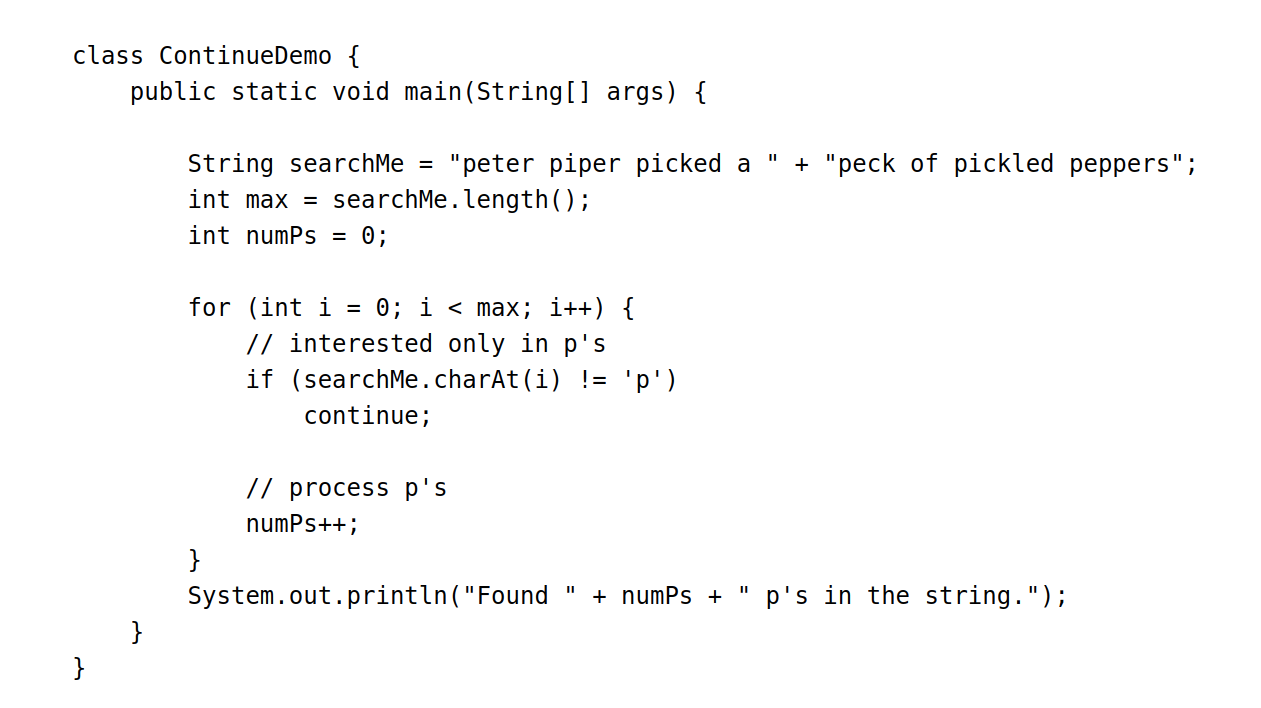Java Basics
Branching Statements
Break
The break statement has two forms: labeled and unlabeled. Unlabeled breaks can be used to terminate a for, while, or do-while loop.

In the above example, the program searches the array for the number 12. The break statement terminates the for loop when that value is found. Control flow then transfers to the statement after the for loop. An unlabeled break statement terminates the innermost switch, for, while, or do-while statement, but a labeled break terminates an outer statement.
Continue
The continue statement skips the current ieration of a for, while, or do-while loop. The unlabeled form skips to the end of the innermost loop’s body and evaluates the boolean expression that controls the loop.

This program steps through a String, counting the occurences of the letter p. If the current character is not a p, the continue statement skips the rest of the loop and proceeds to the next character. If it is a p, the program increments the letter count.
Return
The return statement exits from the current method, and control flow retuns to where the method was invoked. This statement has two forms: one that returns a value, and one that doesn’t. To return a value, simply put the value (or an expression that calculates the value) after the return keyword.
return ++count;
The data type of the returned value must match the type of the method’s declared retun value. When a method is declared void, use the form of retun that doesn’t return a value.
return;